Last Month's Art Challenge Selections
Create a colorful space map of what you think the SPHEREx mission will find!
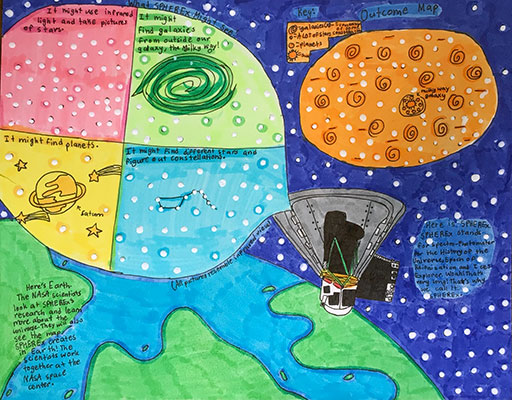
Aaradhya, 10
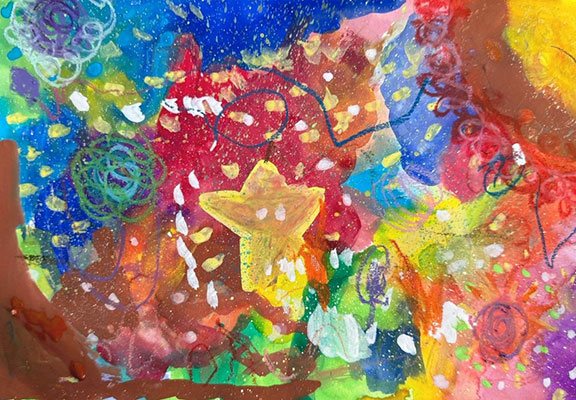
Aiyaphat, 4
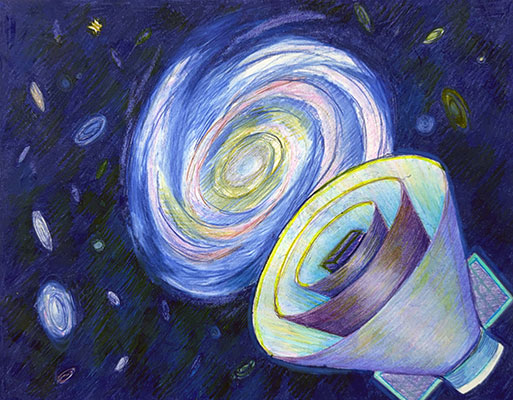
Anna, 14
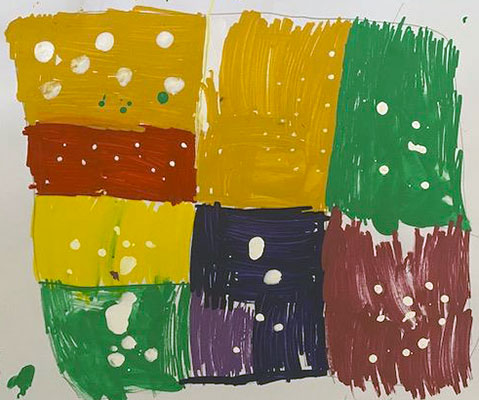
Athena, 6
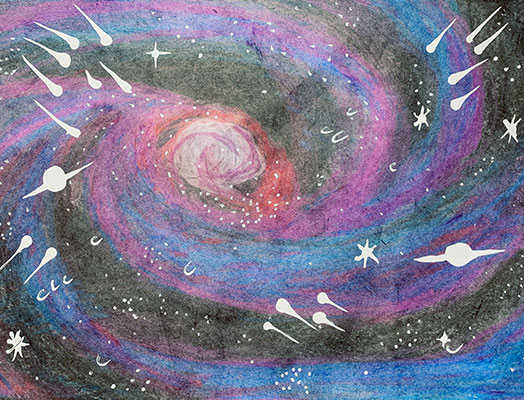
Esdras, 16
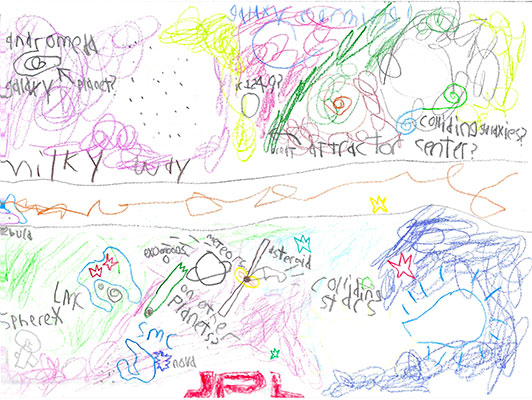
Harrison, 8
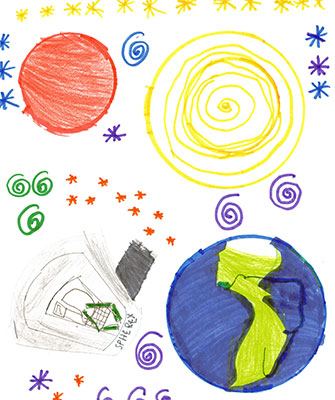
Josue, 8
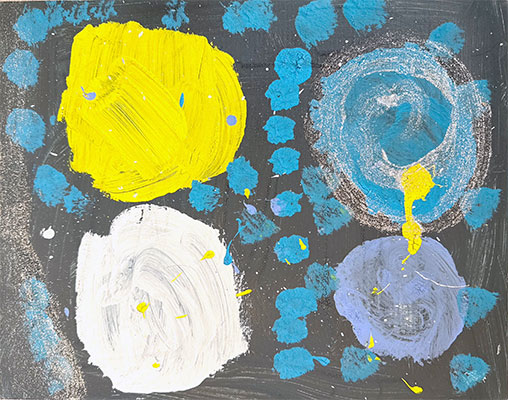
Makayla, 13
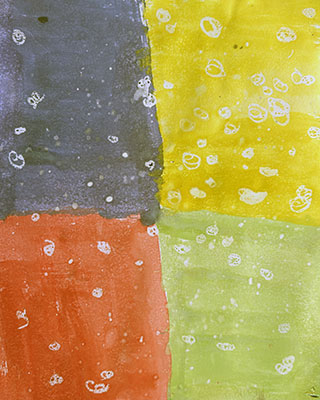
Miabelle, 11
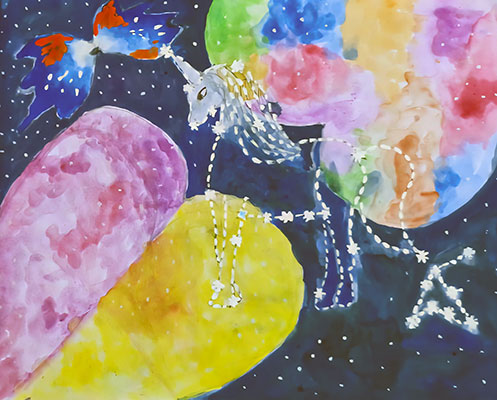
Naisha, 8
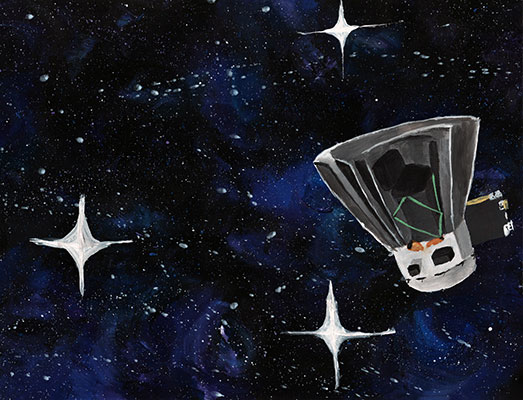
Noal, 14
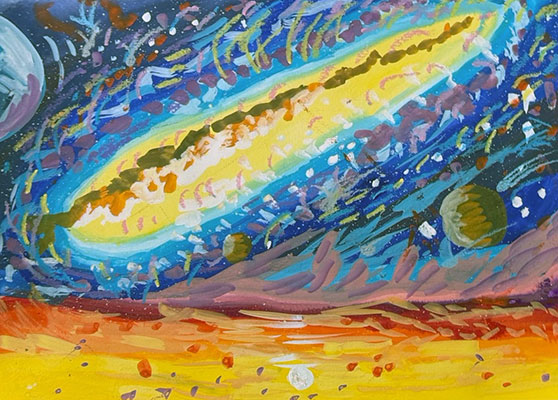
Padawan, 6
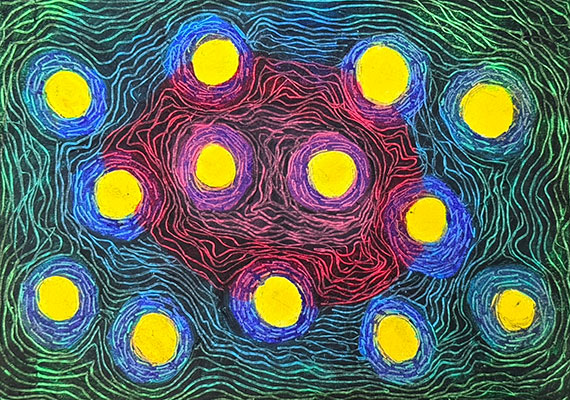
Pitchayapha, 9
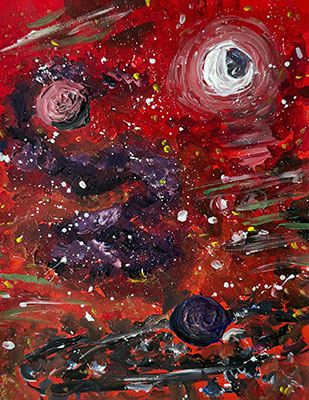
Ryleen, 14
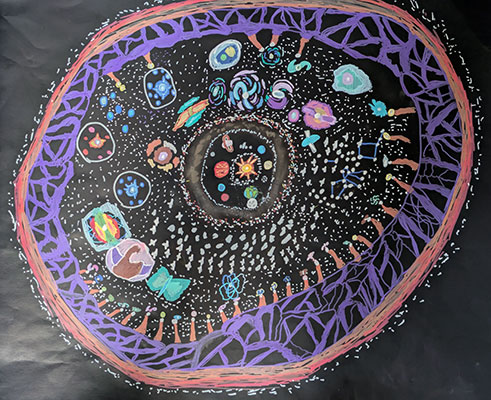
Vishakh, 11
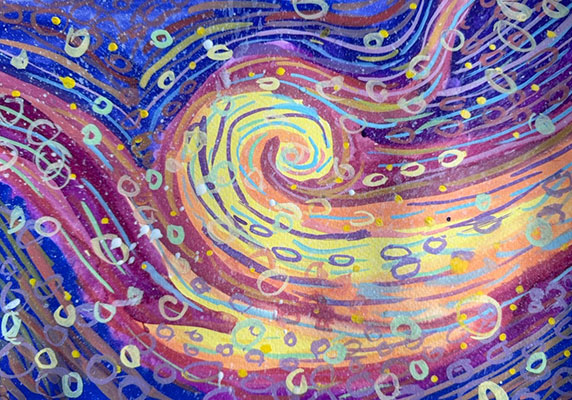
Worraphat, 10
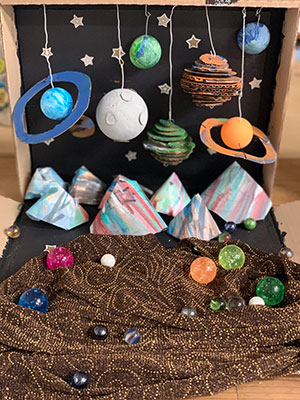
Zhuofeng, 9
Do you love making art and using your imagination? So do we! Every NASA mission starts with a creative idea about how to explore something in a new way.
The art challenge:
In this new activity, we'd like to challenge young explorers to think about and draw a space-related situation each month. And after the month is over, we'll select a few imaginative drawings to be featured on the NASA Space Place website!
So, get ready to exercise that creative brain of yours! Here's what you'll need:
- Paper
- Art supplies (pencils, markers, crayons, paints – whatever you like to use)
- A grownup helper with a camera or scanner and access to email
Note: We cannot accept artwork created with AI technologies.
Space Place Art Challenge prompt:
Sixty years ago, humans had never seen Mars any closer than the view through telescopes here on Earth. However, on July 14, 1965, NASA’s Mariner 4 spacecraft flew past Mars and sent back the first close-up images of another world.
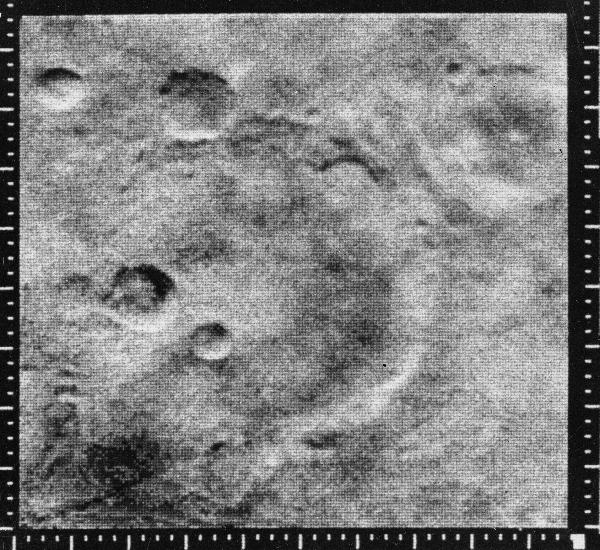
NASA’s Mariner 4 spacecraft was the first to capture close-up photos of another planet when it reached Mars on July 14, 1965. This image was one of the first to clearly show a barren, cratered surface. The largest crater here, in the center, is almost 100 miles wide (about 150 kilometers) and is now named Mariner Crater, after the spacecraft that discovered it. Credit: NASA/JPL-Caltech
Some people were disappointed when the pictures showed only craters and barren ground. There were no signs of life at all, and definitely no Martians, the main characters in so many cartoons and science-fiction stories. Others were excited by that first glimpse of Mars! They wanted to send other spacecraft, so we could keep seeing and learning even more. We’ve been doing that ever since.
This month’s prompt: Mariner 4 was the first spacecraft to reach Mars and send back pictures of what it saw. What if you’re the first astronaut to reach Mars? What do you think you would see? Is there a crater nearby? A tornado-like dust devil? A Mars rover? How about something that nobody else has seen yet? Draw what you think you would see on Mars.
Fun fact: Mariner 4 collected 22 pictures of Mars as it flew by. It captured the images using a primitive digital camera — but not in the way you might expect! For each picture, the camera converted all the areas of the image into numbers, depending on if it was light or dark or something in between. Then Mariner beamed those numbers to a computer on Earth, to convert into pictures.
Computers at that time needed more than eight hours to turn those numbers into a single image. The engineers and scientists at NASA’s Jet Propulsion Laboratory were too excited to wait. So they found a way to print out the numbers that Mariner was sending and hand-colored the image.
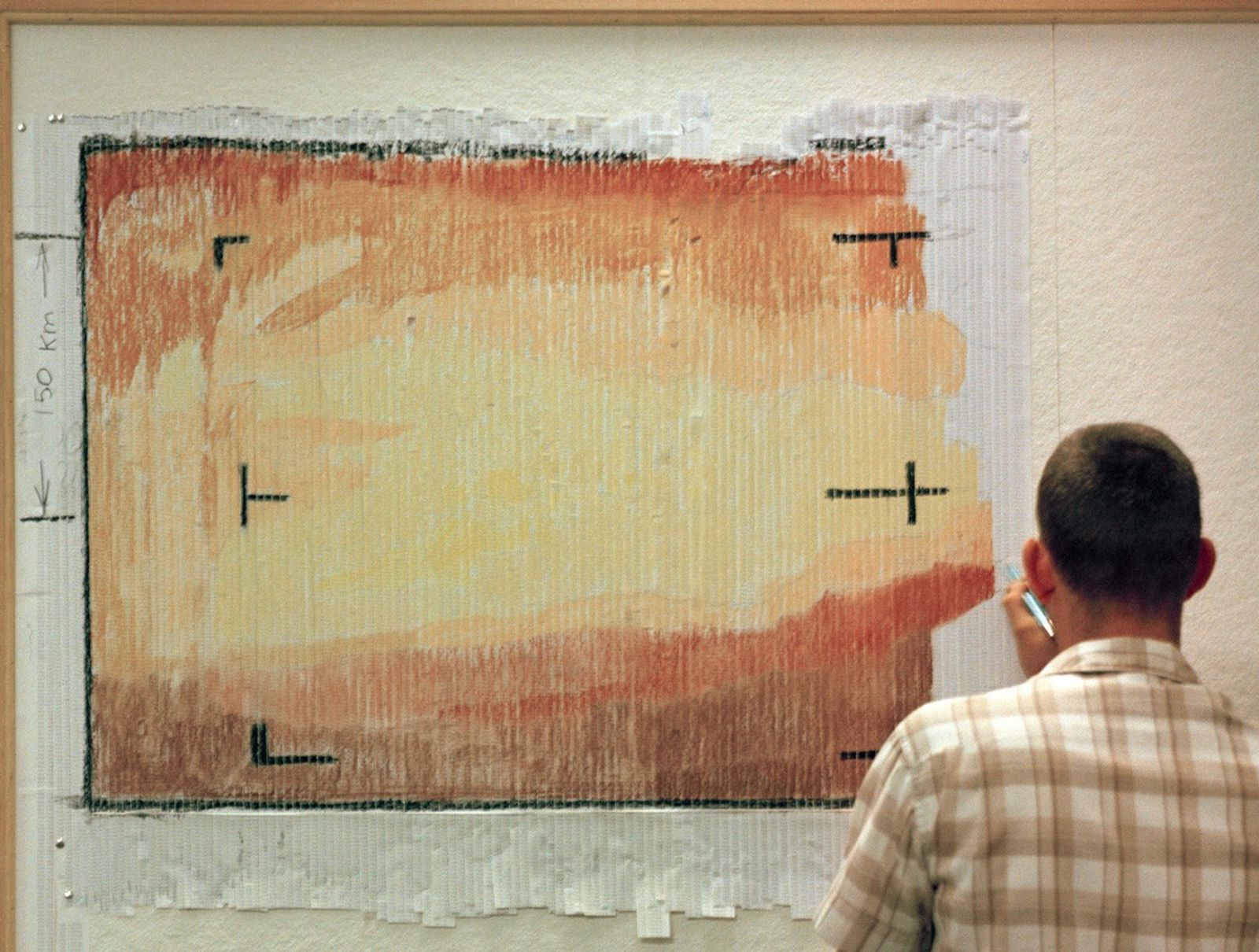
One of the Mariner 4 team members fills in the hand-colored image of Mars that they created. Too anxious to wait several hours for their computers to process the image beamed from Mariner 4, they printed out the data the spacecraft was sending, cut the paper into strips and colored the numbers showing where the image would be dark or light. Credit: NASA/JPL-Caltech
The first image of Mars from a spacecraft was a color-by-numbers picture!
Get creative and submit your art before July 31, 2025. Selected art submissions will appear on the website in early August!

The first picture that Mariner 4 captured of Mars was the planet’s edge, against the blackness of space. But mission team members back on Earth were too eager to wait hours for their computers to process the image. So they printed out the information from Mariner, cut it into strips, and hand-colored the paper wherever the numbers said the picture should be dark, or light, or something in between. Credit: NASA/JPL-Caltech
How to submit your art:
Once you've gotten your ideas on the page, have a grownup take a photo or scan of the drawing and email the following to NASAKidsArt@jpl.nasa.gov:
- Picture of drawing
- First name of artist
- Age of artist
- Completed release form (download here)*
That's it! Have fun creating and we can't wait to see your drawings!
* AUTHORIZATION AND RELEASE FOR PHOTOS, AUDIO AND/OR VIDEO RECORDINGS OF, AND/OR ARTWORK FROM A MINOR CHILD
I hereby grant to the California Institute of Technology (Institute) and its Jet Propulsion Laboratory (JPL) the right to make, use, create derivative works and/or display:
- photos, video and/or audio tape recordings of, my Child and/or
- artwork (in any media, including drawings, photos, music and video creations) created by my Child and submitted to JPL and/or
in any manner or form, and for any lawful purpose at any time. I also grant the Institute to use my Child's name associated with such photos, recordings of my Child or with his/her artwork. I understand that my Child may be photographed and/or video or audio taped verbatim and that the Institute may allow persons external to the Institute to view the pictures or recordings in part or in their entirety. I also understand that any artwork submitted by my Child to the Institute for the Project may be edited, reproduced or displayed publicly at the Institute's discretion. I am fully aware and agree that such use of my Child's image or artwork and name may include posting on publicly available internet sites, including JPL sites and other publicly viewable social media sites. I waive any right that I may have to review or approve of any finished products, or the uses to which such products may be applied. I release and discharge the Institute, its employees, sponsors, and subcontractors from any liability to me by virtue of any representation that may occur in the creation, editing or use of said photos and/or video or audio tape recordings or the editing or use of my Child's artwork.


